Audrey’s family always had a canoe either around the house, on top of the car, or splashing down into many lakes and ponds from Texas all the way up to Illinois. That canoe was acquired in the mid-1960s and it is still around 55 years later, often resting on the shoreline of her brother’s pond in Southeast Texas. That canoe is aluminum and a Grumman.We set out a few years back to find another Grumman 17′ Double-Ender; we knew they were a good size for two to four people and some picnic snacks, and Grumman canoes have a well-deserved reputation for versatility and durability. The authors' 17′ Double Ender sports a new paint job, on the outside and aside from the facelift, is as good as new more than 60 years after leaving the factory.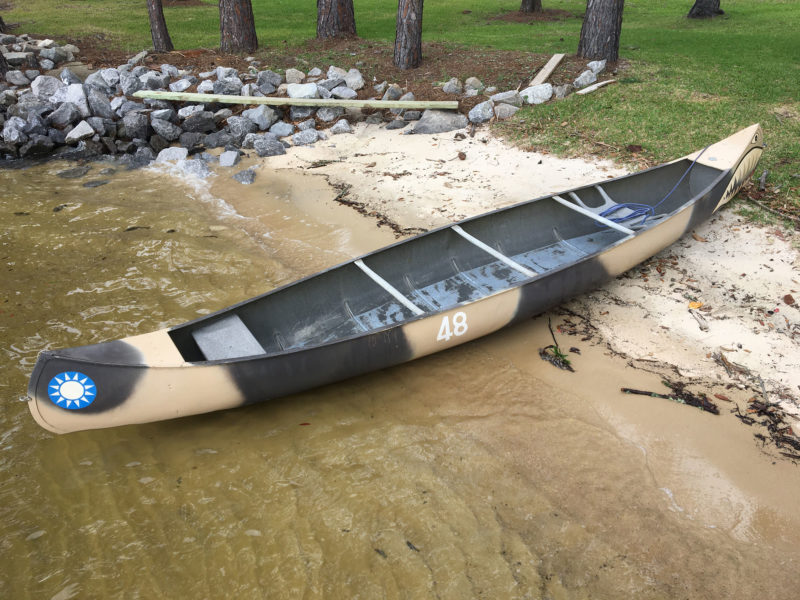 Photographs by the Lewis family
Photographs by the Lewis family
Join The Conversation
We welcome your comments about this article. To include a photo with your remarks, click Choose File below the Comment box.

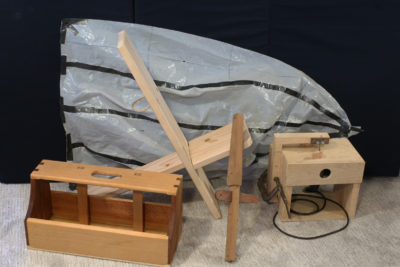
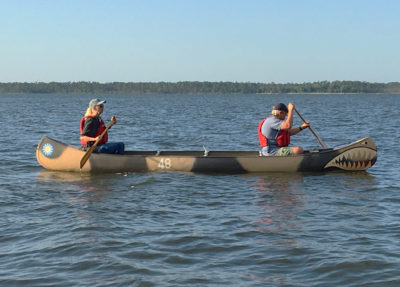
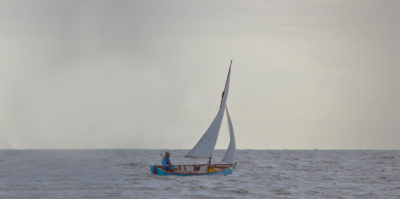
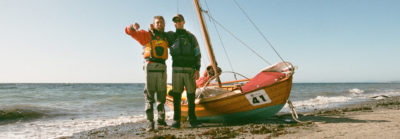
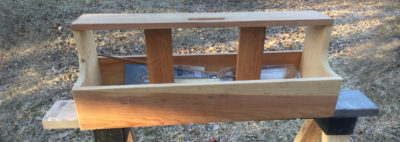
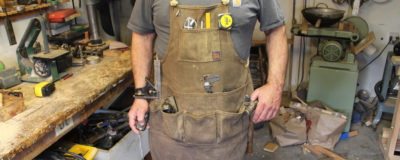
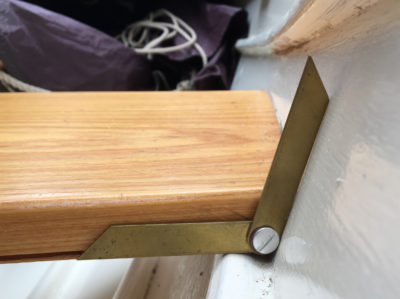

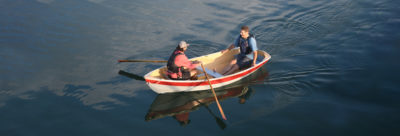
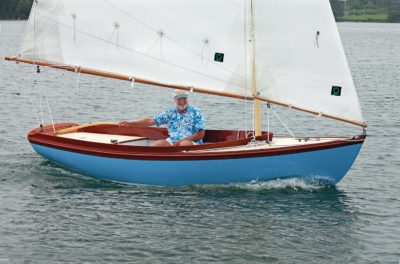
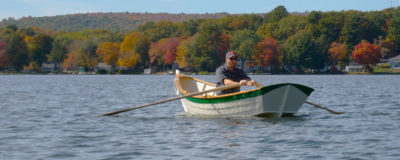
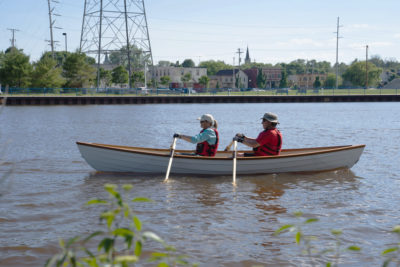
Super versatile craft and good to see a review. You can bang dents out after you hit rocks. The aluminum does have the unfortunate characteristic of being a little sticky when they scrape on rocks. Do not expect high paddling performance: the late Harry Roberts, proponent of fast canoes, called them “bruise-waters.” Three knots is good, more isn’t… unless you have a motor. The Grumman sport boat, a widened square-stern version is magnificent.
Haven’t seen Harry’s name in print in a long time. Met him back in the late 1970s I still cherish his articles in Wilderness Camping.
True story…1955 a man named Jack Thomson and a friend were in a masters class of international relations about South America. The professor said. “If you time it right, you can paddle up the Orinoco, paddle across flooded swamps and get to the head waters of the Amazon and then paddle on down to Rio. Jack asked the prof if he and two friends could really do it?. The prof said not three, but two could; three means an argument. Two of them did it in Grumman canoes. One year, 3000 miles. Grumman told them when they bought the two canoes, if they made it, Grumman would make them famous. Jack went to them and got blown off, so he left them the canoes. We live on the Outer Banks of North Carolina. At the 100th anniversary of the Wright Brothers first flight I met up with Jack. He had been in the Navy during the Korean war when the Navy started a rating, flying midshipman. The Navy was cheap and did not want to pay officer wages to guys flying Corsairs. Jack was one of them. So, Jack says: Hey Charlie, meet one of my buddies from the midshipman. Hey, Neil, this is my buddy, Charlie, say hi to Neil Armstrong. A few years later, Jack was in his 80s, he fell down the stairs and ended up in the hospital. Things were not looking good. He turned to Jean, his wife, and instructed her: If I don’t make it, I don’t want that son of a bitch son-in-law to get my beer. Give it to Charlie. (Explanation: I was their mailman and Jack and I had a mutual admiration of beer. We traded new ones we found.) I toasted my friend for a few months while I slugged down his beer.
P.S. We all should have such a life.
Next comment: I grew up on Long Island just south of Grumman and Republic in Amityville, New York. No, I am not the Amityville horror. At one point, Grumman had a huge inventory of the drop tanks for their fighter jets. Grumman had a history of taking care of its employees starting with day care back in WW2. So they offered the tanks to employees. The tanks were manufactured in halves and then welded together. Take a half, put some scrap wood on the bow and stern and you had a canoe. Ooops, if you did not put a skeg on it you skewed all over the place. Great fun, for free, for water rats.
P.S. All those damn Grumman and Republic employees also made titanium fittings for their racing boats, especially some of those Lightning-class skippers. Fond memories.
I read about an incident where a Grumman canoe came loose from the top of a vehicle at 60 mph and went airborne, landing in a ditch. When it was retrieved, there wasn’t even a dent in it.
It was designed by people who made things that fly and safely land…
In 1969 my wife and I bought a well-used 18′ double-ended Grumman canoe from an outfitter in Ely, Minnesota, and brought it back to our home in St. Paul. It was pretty battered up, but was sound and serviceable. It was big enough to haul our family of six, proved remarkably stable, and was perfect for exploring local lakes and St. Croix River backwaters. We moved to Northern Idaho where its stability and capacity saved us when we foolishly loaded it with four adults and took a trip down the St. Joe River during spring runoff. In the mid-eighties, the canoe blew off the roof of our car while my wife was on an overpass. It landed bow-first on the road below. After pounding the stem back into alignment (sort of), pounding out dents, and filling the blown-out seam between the stem and the hull with polyester resin and fiberglass, it was good to go and has been serving us well for fishing, hunting, and exploring the lakes and estuaries of the Oregon Coast. I recently found the gunter sail rig. When I sit on the floor, the canoe is surprisingly stable under sail, and it really moves.
My family purchased a 17′ Grumman when I was 12 years old. I am now 72 and it is still going strong. Right now my personal fleet numbers 7 boats. I never have to do any maintenance on it. It is stored outside in the salt air on a New Jersey barrier island. I have used it as a sliding-seat row boat with the Piantedosi Scout drop-in sliding seat rowing rig. In my late 20s I paddled it the length of the Kickapoo River in Wisconsin with my dog Teddy. As mentioned in an earlier post it is not a speed demon but I have always felt safe in it even when caught out in 20+ winds with wind driven waves of 3′ to 4′. By any measure a great boat!
As a skinny Boy Scout in the early sixties, in the boundary waters of northern Minnesota, I dreaded the next portage when it was my turn to carry one of these beasts. I learned gunwale pumping with a Grumman and slept under it many a night.
I learned to sail in a Grumman canoe. It belonged to Dr. Frank Martin, a chemistry professor at Purdue, who was a summer neighbor at Crystal Lake in Michigan. I don’t know the if the rig was Dr. Martin’s design, but it worked well and had the advantage, for a sailboat, of being cartopped. It was gunter rigged, with aluminum spars and a red nylon sail that I think was sewed by Dr. Martin’s wife, Alice. The leeboard bracket was an aluminum extrusion with plates welded at either end. The sheet-aluminum leeboards were attached to the plates by bronze bolts and tailnuts. The aft-facing wooden tiller pivoted from the leeboard bracket and attached to the rudder via line and pulleys. For seating, there were plywood rectangles for seat backs set against thwarts with boat cushions for seat and back. It was pleasant to sail, though I don’t recall going out in really flukey or high winds. Dr. Martin is long gone and I have no idea what became of the canoe. It could still be around. It was a lovely boat.
Fond memories of canoeing the Blanco River in the Texas Hill Country in a fleet of Grumman canoe. Still on the lookout for a Grumman Sport Boat.
These are boats that you neither love nor hate. I had one a long time ago – gave it to my cousin. He loved it. I didn’t miss it. I belong to a Victorian Era canoe club where you can see some very nice canoes. We keep a number of Grumman canoes around as utility and loaner boats so as not to mess up our “good” boats. These aren’t bad boats, if you’re mostly going downstream and you don’t hit many rocks. As another commented, they do stick to rocks. Back when these were commonly used by liveries as rental craft, the peskiest rocks would shine from the aluminum they left behind.
Good tip, we’ll know to look out for shiny rocks now! 🙂
What a wonderful article. In the late ’50s, my Boy Scout troop would spend the month of August every other year above Georgian Bay, Ontario, fishing and camping. The 17′ Grumman canoe was our transportation. Some years our fleet was 14 to 16 canoes. I portaged among the lakes many times. It was light, tough, and carried all our supplies.
Who knew it would become a classic?
I have had a 17′ Grumman canoe since 1968, and over the years have used it for fishing, crabbing, duck-hunting, camping, and, of course, just paddling. I have a Grumman rowing seat with outriggers. A pair of 7′ spoon-blade spruce oars will make this good old 17-footer fly.
I found this article by chance, and am excited to have found a pre-1950 17′ double-ender on Craigslist here in Jacksonville, Florida, two weeks ago. I had been looking for one of these indestructible canoes for some time, having taught canoeing and been a BSA merit-badge counsellor using these canoes back in the ’50s and ’60s. The camp waterfront staff regularly competed in gunwale-pumping races to the delight of the campers. Now in my 70s, I look forward to trying that again soon.
Mine has the mast step, but no other remnants of the sailing kit. I would love to receive information about the kit and perhaps how to best refinish one.
We have been slowly collecting pieces of the sailing kit by purchasing items from eBay such as the mast thwart, mast step, leeboards and bracket, rudder and rudder adapter. We have yet to find the 65 sf gunter sail and spars or 55 sf lateen kit down South. There are currently instructions for the gunter kit for sale on eBay and a few other parts. I have corresponded with the current canoe manufacturer, Marathon, and unfortunately they have no corporate knowledge of the sailing kits.
We also are working on a rig of our own design, a yawl with a 60 sf gaff main and 28 sf mizzen and anticipate sea trials soon. Check out our progress with our canoe SCOUT on our blog, Small Boat Restoration.
I have a 17′ double-ender with a manufacturer’s plate under the bow. Can’t read the plate. Anyone know what details are there?
Hi Jim
SCOUT’s crusty data plate reads 1384-GP-5-17 and says Marathon, which breaks down to hull number 1384 from the Marathon, N.Y. plant, making her one of the earliest canoes built there after the plant opened in 1952. We believe that the code 1384-GP-5-17 means Hull Number 1384-General Purpose design for the standard T-keel , -.050 aluminum thickness, 17 foot.
Hmm, been looking for a Solo, impossible to find.
If you loaded the front with jugs of water about 100 lbs, could you Solo this from the back? It’s it a low profile boat, I’m on a 5-mile-wide saltwater river, let’s say the wind can pick up a bit.
At 70 a little worried about that weight, but you say easy to tilt, shove up on a roof. I assume fishing from it is fine.
Any thoughts, things to look for, water leaks.
You do that paint job? Expensive? Rather like it.
One gripe with metal canoes I have found, can live with the noise, but sun reflection off bottom, sides, can be a deal breaker. Painting inside to knock that off might be useful?
$300 good deal for one in good shape?
Thanks
Consider getting a drop-in middle seat. You can solo paddle with a long kayak paddle. I haven’t finalized mine yet, but have tried temporary setups. It works nicely.
To solo in my vintage 17′ Grumman double-ender, I turn it around and sit in the bow seat facing the stern. The cross-member is not in my way because, with feet flat on the canoe’s bottom, that bar is under my knees. Works great.
As a waterfowl guide and wilderness lover in the past, I know quite a bit about light boats and canoes for Alaska conditions. Up here many tout the Grumman sports boat. Years ago I found a “sports boat” that was lighter, built in camo color, had a much better and wider back, and is little known. It is called the Sportspal X-13 and is fabulous with a light outboard. This boat/canoe can be portaged, carried, boat topped with ease. Company also has many regular sharp-end canoe models. With the foam sponsons the X-13 is almost tip-over proof and great for older folk as are their canoes.